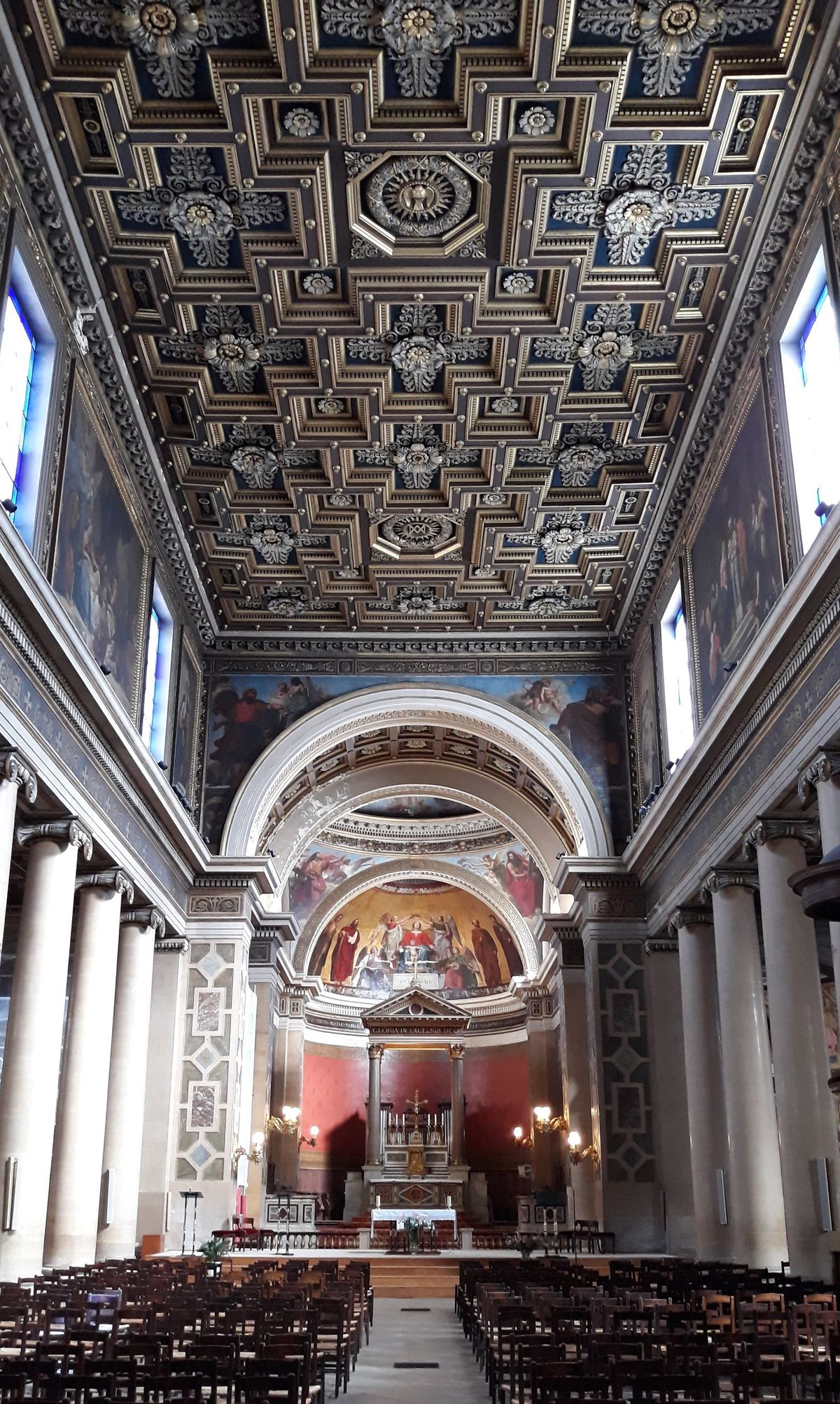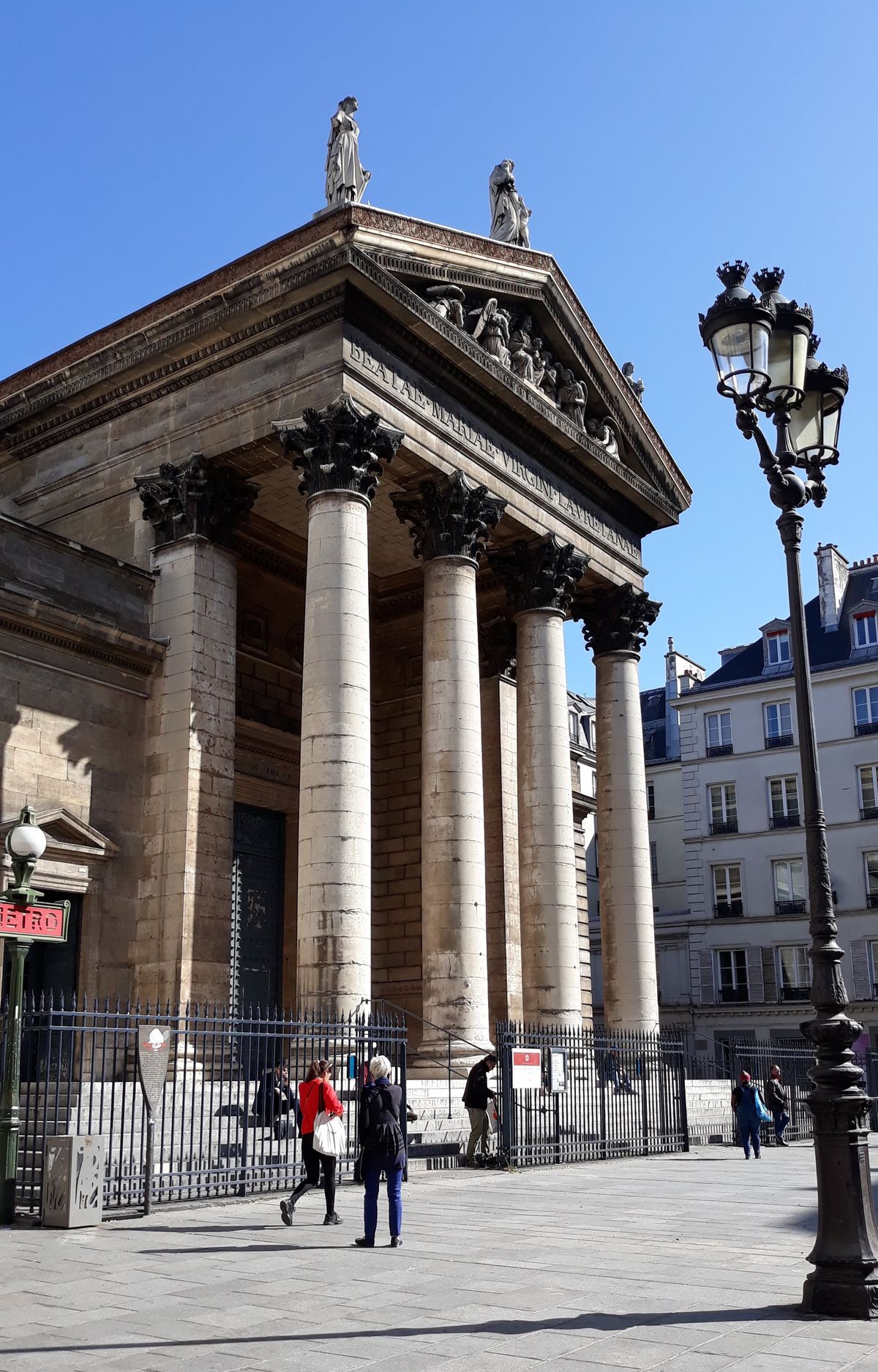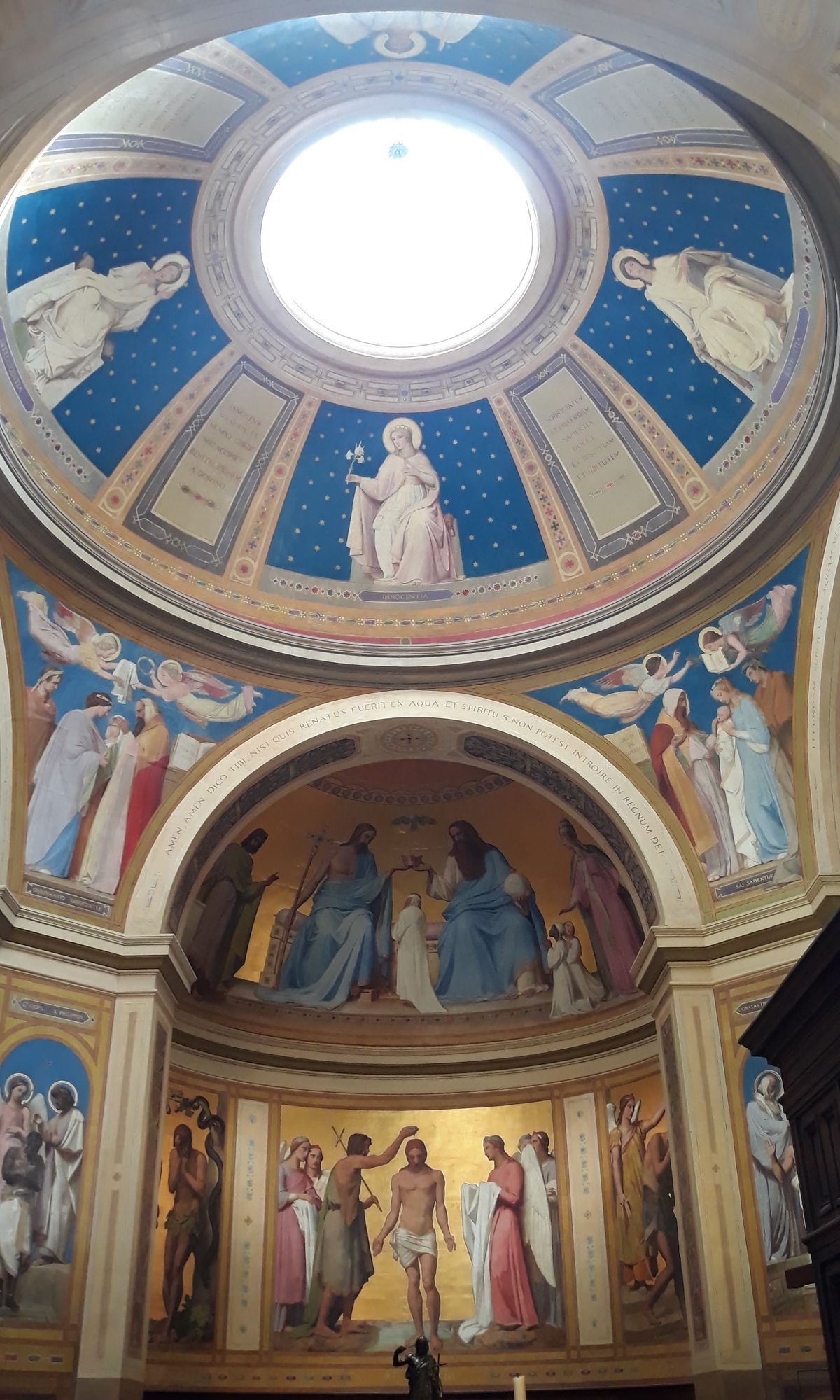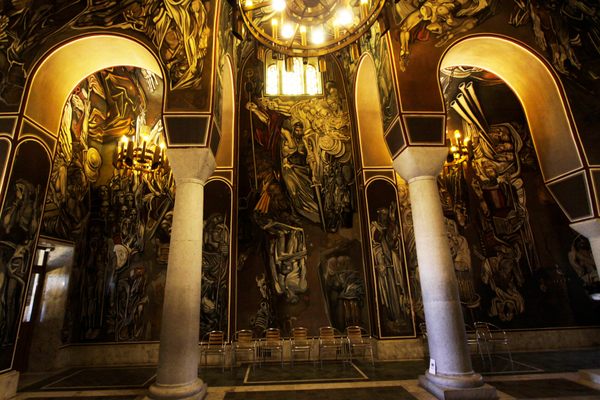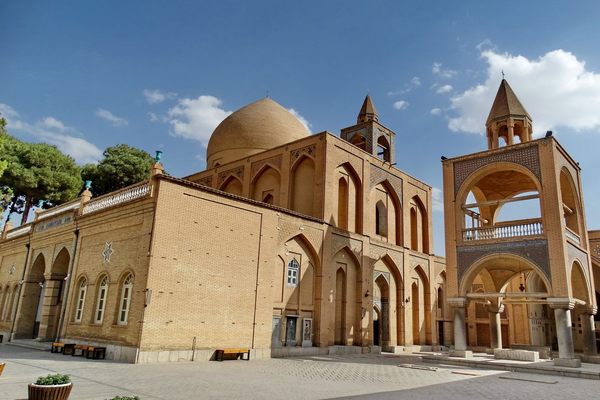About
The Église Notre Dame de Lorette, with its gilded ceiling and profusion of paintings and frescoes, is one of the most ornate churches in Paris. Constructed in the neoclassical style of architecture, the austere façade of the church stands in sharp contrast to the ornamental excesses of its interior.
During the 19th century, as the area to the north of the Grands Boulevards was undergoing rapid expansion, the city government decided to hold an architectural competition for a new church. It would be constructed at the site of a chapel destroyed in 1796 in the 9th arrondissement.
The French architect Louis-Hippolyte Lebas won the competition and began building the church in 1823, completing construction in 1836. A protected historical monument since 1984, the church has mostly remained off the tourist map, but is no less a jewel in the city’s cornucopia of architectural treasures.
Sumptuously furnished with marble and gold, the extravagant interior of the church wasn't initially very popular among Parisians who considered it lacking in spirituality. Furthermore, the church’s location in a neighborhood inhabited by wealthy men who kept mistresses earned it the pejorative moniker of being the church of the lorettes (prostitutes).
In a city like Paris with an embarrassment of architectural riches, the Church of Notre Dame de Lorette is still a sight to behold. Its interior and exterior offer a study in contrasts. In its architectural style, the church was inspired by the design of the Roman basilicas. The façade, unadorned to the point of severity, consists of a massive pediment, displaying the sculpted allegorical figures of Faith, Hope, and Charity mounted on tall Corinthian columns.
The interior of the church, on the other hand, is lavishly decorated. The ceiling, richly appointed in dark blue and gold, is embellished with the initials of the Virgin Mary. The walls of the church are adorned with vividly colorful hand-painted murals that have been brought to life against a burnished gold background. The artwork, executed in an Italianate style and biblical in subject, is what makes this church truly spectacular.
In addition to its grandeur, the church has another local claim to fame. Inside this colorful sanctuary is where painter Claude Monet was baptized. Monet was born in 1840 and was baptized into the local church parish a year later. His family, however, did not stay in Paris for long and moved away in 1845 to Le Havre in Normandy.
Related Tags
Know Before You Go
The church is open every day. There is no entry fee. The Notre-Dame-de-Lorette metro stop on line 12 is the closest metro station.
Community Contributors
Added By
Published
November 7, 2019
Sources
- https://www.wmf.org/project/notre-dame-de-lorette
- https://www.wmf.org/project/churches-saint-merri-and-notre-dame-de-lorette
- https://en.parisinfo.com/paris-museum-monument/71964/Eglise-Notre-Dame-de-Lorette
- https://www.liturgicalartsjournal.com/2019/04/the-parisian-church-of-notre-dame-de.html
- https://www.claudemonetgallery.org/biography.html
- https://www.france-voyage.com/cities-towns/paris-29996/church-notre-dame-lorette-17366.htm
- The Architecture of Paris: An Architectural Guide, Andrew Ayers, Edition Axel Menges, 2004







